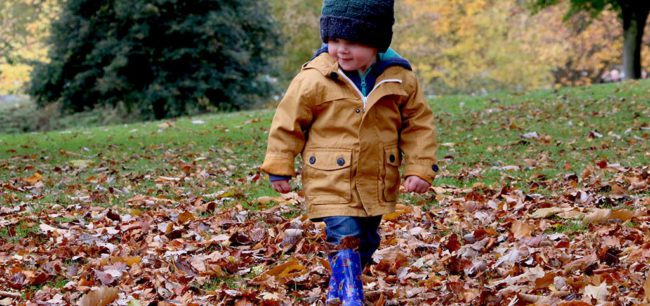BACKGROUND:
Natural environments, including green spaces, may have beneficial impacts on brain development. However, longitudinal evidence of an association between long-term exposure to green spaces and cognitive development (including attention) in children is limited.
OBJECTIVES:
We evaluated the association between lifelong residential exposure to green space and attention during preschool and early primary school years.
METHODS:
This longitudinal study was based on data from two well-established population-based birth cohorts in Spain. We assessed lifelong exposure to residential surrounding greenness and tree cover as the average of satellite-based normalized difference vegetation index and vegetation continuous fields, respectively, surrounding the child’s residential addresses at birth, 4-5 y, and 7 y. Attention was characterized using two computer-based tests: Conners’ Kiddie Continuous Performance Test (K-CPT) at 4-5 y (n=888) and Attentional Network Task (ANT) at 7 y (n=987). We used adjusted mixed effects models with cohort random effects to estimate associations between exposure to greenness and attention at ages 4-5 and 7 y.
RESULTS:
Higher lifelong residential surrounding greenness was associated with fewer K-CPT omission errors and lower K-CPT hit reaction time-standard error (HRT-SE) at 4-5 y and lower ANT HRT-SE at 7 y, consistent with better attention. This exposure was not associated with K-CPT commission errors or with ANT omission or commission errors. Associations with residential surrounding tree cover also were close to the null, or were negative (for ANT HRT-SE) but not statistically significant.
CONCLUSION:
Exposure to residential surrounding greenness was associated with better scores on tests of attention at 4-5 y and 7 y of age in our longitudinal cohort. https://doi.org/10.1289/EHP694.
Read the Research
References:
- Amoly E, Dadvand P, Forns J, López-Vicente M, Basagaña X, Julvez J. 2014. Green and blue spaces and behavioral development in Barcelona schoolchildren: The BREATHE Project. Environ Health Perspect 122(12):1351–1358. PMID: 25204008, 10.1289/ehp.1408215. – DOI – PMC – PubMed
- Barnard H, Rao R, Xu Y, Froehlich T, Epstein J, Lanphear BP, et al. 2015. Association of the Conners’ Kiddie Continuous Performance Test (K-CPT) performance and parent-report measures of behavior and executive functioning. J Atten Disord pii:1087054715578271, PMID: 25846228 10.1177/1087054715578271. – DOI – PubMed
- Berman MG, Jonides J, Kaplan S. 2008. The cognitive benefits of interacting with nature. Psychol Sci 19(12):1207–1212, PMID: 19121124, 10.1111/j.1467-9280.2008.02225.x. – DOI – PubMed
- Bowler D, Buyung-Ali L, Knight T, Pullin A. 2010. A systematic review of evidence for the added benefits to health of exposure to natural environments. BMC Public Health 10:456, PMID: 20684754, 10.1186/1471-2458-10-456. – DOI – PMC – PubMed
- Chu R, Thabane L, Ma J, Holbrook A, Pullenayegum E, Devereaux P. 2011. Comparing methods to estimate treatment effects on a continuous outcome in multicentre randomized controlled trials: a simulation study. BMC Med Res Methodol 11(1):21, 10.1186/1471-2288-11-21. – DOI – PMC – PubMed
- Conners CK. 2000. Conners’ Continuous Performance Test II: Computer Program for Windows Technical Guide and Software Manual. Staff MHS, eds. North Tonawanda, NY:Multi-Health Systems.
- Dadvand P, Bartoll X, Basagaña X, Dalmau-Bueno A, Martinez D, Ambros A, et al. 2016. Green spaces and general health: roles of mental health status, social support, and physical activity. Environ Int 91:161–167, PMID: 26949869, 10.1016/j.envint.2016.02.029. – DOI – PubMed
- Dadvand P, de Nazelle A, Triguero-Mas M, Schembari A, Cirach M, Amoly E, et al. 2012. Surrounding greenness and exposure to air pollution during pregnancy: an analysis of personal monitoring data. Environ Health Perspect 120(9):1286–1290, PMID: 22647671, 10.1289/ehp.1104609. – DOI – PMC – PubMed
- Dadvand P, Nieuwenhuijsen MJ, Esnaola M, Forns J, Basagaña X, Alvarez-Pedrerol M, et al. 2015a. Green spaces and cognitive development in primary schoolchildren. Proc Natl Acad Sci USA U S A 112(26):7937–7942, PMID: 26080420, 10.1073/pnas.1503402112. – DOI – PMC – PubMed
- Dadvand P, Rivas I, Basagaña X, Alvarez-Pedrerol M, Su J, De Castro Pascual M, et al. 2015b. The association between greenness and traffic-related air pollution at schools. Sci Total Environ 523:59–63, PMID: 25862991, 10.1016/j.scitotenv.2015.03.103. – DOI – PubMed
- Dadvand P, Sunyer J, Basagaña X, Ballester F, Lertxundi A, Fernández-Somoano A, et al. 2012. Surrounding greenness and pregnancy outcomes in four Spanish birth cohorts. Environ Health Perspect 120(10):1481–1487, PMID: 22899599, 10.1289/ehp.1205244. – DOI – PMC – PubMed
- Dadvand P, Wright J, Martinez D, Basagaña X, McEachan RRC, Cirach M, et al. 2014. Inequality, green spaces, and pregnant women: roles of ethnicity and individual and neighbourhood socioeconomic status. Environ Int 71:101–108, PMID: 24997306, 10.1016/j.envint.2014.06.010. – DOI – PubMed
- Egeland J, Kovalik-Gran I. 2010. Measuring several aspects of attention in one test: the factor structure of Conners’s Continuous Performance Test. J Atten Disord 13(4):339–346, PMID: 18728238, 10.1177/1087054708323019. – DOI – PubMed
- Epstein JN, Erkanli A, Conners CK, Klaric J, Costello JE, Angold A. 2003. Relations between continuous performance test performance measures and ADHD behaviors. J Abnorm Child Psychol 31(5):543–554, PMID: 14561061. – PubMed
- Fedewa AL, Ahn S. 2011. The effects of physical activity and physical fitness on children’s achievement and cognitive outcomes. Res Q Exerc Sport 82(3):521–535, PMID: 21957711, 10.1080/02701367.2011.10599785. – DOI – PubMed
- Forns J, Esnaola M, López-Vicente M, Suades-González E, Alvararez-Pedrerol M, Julvez J, et al. 2014. The n-back test and the attentional network task as measures of child neuropsychological development in epidemiological studies. Neuropsychology 28(4):519–529, PMID: 24819069, 10.1037/neu0000085. – DOI – PubMed
- Gidlöf-Gunnarsson A, Öhrström E. 2007. Noise and well-being in urban residential environments: the potential role of perceived availability to nearby green areas. Landscape and Urban Plan 83(2):115–126, 10.1016/j.landurbplan.2007.03.003. – DOI
- Grandjean P, Landrigan PJ. 2014. Neurobehavioural effects of developmental toxicity. Lancet Neurol 13(3):330–338, PMID: 24556010, 10.1016/S1474-4422(13)70278-3. – DOI – PMC – PubMed
- Guxens M, Ballester F, Espada M, Fernández MF, Grimalt JO, Ibarluzea J, et al. 2012. Cohort profile: The INMA—INfancia y Medio Ambiente—(Environment and Childhood) Project. Int J Epidemiol 41(4):930–940, PMID: 21471022, 10.1093/ije/dyr054. – DOI – PubMed
- Homack S, Riccio CA. 2006. Conners’ Continuous Performance Test (2nd ed.; CCPT-II). J Atten Disord 9(3):556–558, PMID: 16481673, 10.1177/1087054705283578. – DOI – PubMed
- James P, Banay RF, Hart JE, Laden F. 2015. A review of the health benefits of greenness. Curr Epidemiol Rep 2(2):131–142, PMID: 26185745, 10.1007/s40471-015-0043-7. – DOI – PMC – PubMed
- Kahn PH. 1997. Developmental psychology and the biophilia hypothesis: children’s affiliation with nature. Dev Rev 17(1):1–61, 10.1006/drev.1996.0430. – DOI
- Kahn PH, Kellert SR. 2002. Children and nature: psychological, sociocultural, and evolutionary investigations. Cambridge, MA: Massachusetts Institute of Technology.
- Kaplan R, Kaplan S. 1989. The experience of nature: a psychological perspective. New York: Cambridge University Press.
- Kaplan S. 1995. The restorative benefits of nature: toward an integrative framework. J Environ Psychol 15(3):169–182, 10.1016/0272-4944(95)90001-2. – DOI
- Kellert SR. 2005. Building for Life: Designing and Understanding the Human-Nature Connection. Washington, DC: Island Press.
- Kellert SR, Wilson EO. 1993. The biophilia hypothesis. Washington, DC: Island Press.
- Klatte M, Bergström K, Lachmann T. 2013. Does noise affect learning? a short review on noise effects on cognitive performance in children. Front Psychol 4:578, PMID: 24009598, 10.3389/fpsyg.2013.00578. – DOI – PMC – PubMed
- Kuo FE, Taylor AF. 2004. A potential natural treatment for attention-deficit/hyperactivity disorder: evidence from a national study. Am J Public Health 94(9):1580–1586, PMID: 15333318. – PMC – PubMed
- Lachowycz K, Jones AP. 2011. Greenspace and obesity: a systematic review of the evidence. Obes Rev 12(5):e183–e189, PMID: 21348919, 10.1111/j.1467-789X.2010.00827.x. – DOI – PubMed
- Lovasi G, Jacobson J, Quinn J, Neckerman K, Ashby-Thompson M, Rundle A. 2011. Is the environment near home and school associated with physical activity and adiposity of urban preschool children? J Urban Health 88(6):1143–1157, PMID: 21826583, 10.1007/s11524-011-9604-3. – DOI – PMC – PubMed
- Maas J, Verheij RA, de Vries S, Spreeuwenberg P, Schellevis FG, Groenewegen PP. 2009. Morbidity is related to a green living environment. J Epidemiol Community Health 63(12):967–973, PMID: 19833605, 10.1136/jech.2008.079038. – DOI – PubMed
- Markevych I, Tiesler CMT, Fuertes E, Romanos M, Dadvand P, Nieuwenhuijsen MJ, et al. 2014. Access to urban green spaces and behavioural problems in children: results from the GINIplus and LISAplus studies. Environ Int 71:29–35, PMID: 24953038, 10.1016/j.envint.2014.06.002. – DOI – PubMed
- McEachan RRC, Prady SL, Smith G, Fairley L, Cabieses B, Gidlow C, et al. 2016. The association between green space and depressive symptoms in pregnant women: moderating roles of socioeconomic status and physical activity. J Epidemiol Community Health 70(3):253–259, 10.1136/jech-2015-205954. – DOI – PMC – PubMed
- Ramchandani P, Psychogiou L. 2009. Paternal psychiatric disorders and children’s psychosocial development. Lancet 374(9690):646–653, PMID: 19411102, 10.1016/S0140-6736(09)60238-5. – DOI – PubMed
- Rook GAW. 2013. Regulation of the immune system by biodiversity from the natural environment: an ecosystem service essential to health. Proc Natl Acad Sci USA 110(46):18360–18367, PMID: 24154724, 10.1073/pnas.1313731110. – DOI – PMC – PubMed
- Rook GAW, Lowry CA, Raison CL. 2013. Microbial ‘Old Friends’, immunoregulation and stress resilience. Evol Med Public Health 2013(1):46–64, PMID: 24481186, 10.1093/emph/eot004. – DOI – PMC – PubMed
- Rook GAW, Lowry CA, Raison CL. 2014. Hygiene and other early childhood influences on the subsequent function of the immune system. Brain Res 1617:47–62, PMID: 24732404, 10.1016/j.brainres.2014.04.004. – DOI – PubMed
- Rueda MR, Fan J, McCandliss BD, Halparin JD, Gruber DB, Lercari LP, et al. 2004. Development of attentional networks in childhood. Neuropsychologia 42(8):1029–1040, PMID: 15093142, 10.1016/j.neuropsychologia.2003.12.012. – DOI – PubMed
- Sexton JO, Song X-P, Feng M, Noojipady P, Anand A, Huang C, et al. 2013. Global, 30-m resolution continuous fields of tree cover: Landsat-based rescaling of MODIS vegetation continuous fields with lidar-based estimates of error. Int J Digit Earth 6(5):427–448, 10.1080/17538947.2013.786146. – DOI
- Spanish Ministry of Public Works. 2012. Atlas of Urban Vulnerability in Spain. Methodology and Contents. http://www.fomento.gob.es/NR/rdonlyres/40668D5E-26B6-4720-867F-286BD55E1… [accessed 27 May 2016].
- Sunyer J, Esnaola M, Alvarez-Pedrerol M, Forns J, Rivas I, López-Vicente M, et al. 2015. Association between traffic-related air pollution in schools and cognitive development in primary school children: a prospective cohort study. PLoS Med 12(3):e1001792, PMID: 25734425, 10.1371/journal.pmed.1001792. – DOI – PMC – PubMed
- Taylor AF, Kuo FE. 2009. Children with attention deficits concentrate better after walk in the park. J Atten Disord 12(5):402–409, PMID: 18725656, 10.1177/1087054708323000. – DOI – PubMed
- Taylor AF, Kuo FE, Sullivan WC. 2001. Coping with ADD. The surprising connection to green play settings. Environ Behav 33(1):54–77, 10.1177/00139160121972864. – DOI
- Timperio A, Giles-Corti B, Crawford D, Andrianopoulos N, Ball K, Salmon J, et al. 2008. Features of public open spaces and physical activity among children: findings from the CLAN study. Prev Med 47(5):514–518, PMID: 18718847, 10.1016/j.ypmed.2008.07.015. – DOI – PubMed
- van den Berg AE, van den Berg CG. 2011. A comparison of children with ADHD in a natural and built setting. Child Care Health Dev 37(3):430–439, PMID: 21143265, 10.1111/j.1365-2214.2010.01172.x. – DOI – PubMed
- Wells NM. 2000. At home with nature effects of greenness on children’s cognitive functioning. Environ Behav 32(6):775–795, 10.1177/00139160021972793. – DOI
- Wilson EO. 1984. Biophilia. Cambridge, MA:Harvard University Press.
- Wu C-D, McNeely E, Cedeño-Laurent JG, Pan W-C, Adamkiewicz G, Dominici F, et al. 2014. Linking student performance in Massachusetts elementary schools with the “greenness” of school surroundings using remote sensing. PloS one 9(10):e108548, PMID: 25310542, 10.1371/journal.pone.0108548. – DOI – PMC – PubMed

